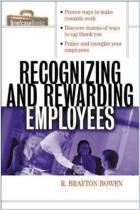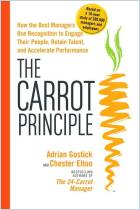
1501 Ways to Reward Employees
Low-Cost and No-Cost Ideas. Best Practices. Latest Trends. Proven Strategies. Ways to Motivate the Millennial Generation.
Read or listen offline
Amazon KindleRecommendation
Bob Nelson’s list-packed primer on praising shows you the right and wrong ways to reward high-performing employees. “Dr. Bob” explains the crucial roles that recognition and gratitude play in employee motivation and performance, and tells you how to make meaningful gratitude and acknowledgment an integral part of your firm. He outlines strategies for a variety of scenarios, from offering regular commendation on normal workdays to recognizing employees when times are tough. His real-life examples of how top employers make workers feel appreciated add depth to his chunky list. getAbstract recommends that managers keep a well-thumbed edition at hand.
Summary
About the Author
Employee motivation expert “Dr. Bob” Nelson is president of Nelson Motivation Inc. He co-founded Recognition Professionals International and has sold four million books in 37 languages.

















Comment on this summary